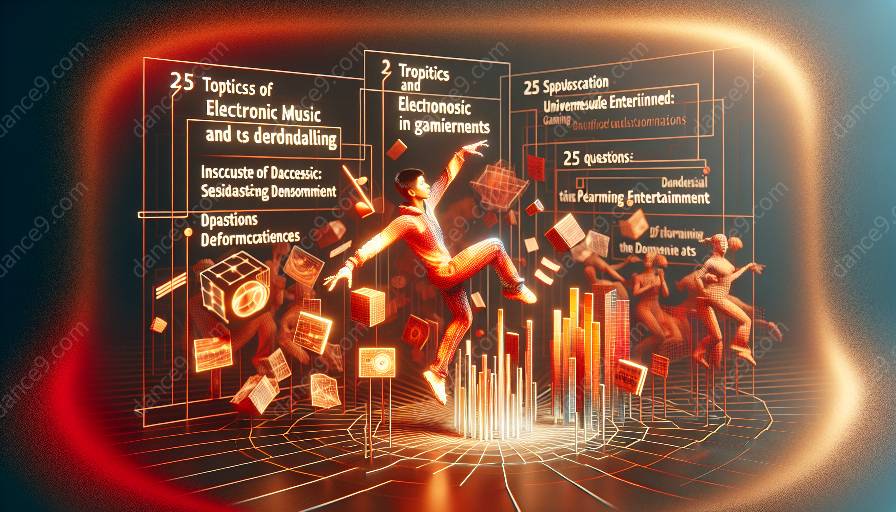In recent years, the incorporation of gamification in university curriculums has gained widespread attention, revolutionizing the traditional classroom experience. This approach, which involves the application of game mechanics and design principles in non-game contexts, presents a myriad of educational benefits. One particularly innovative application of this concept is the integration of dance and electronic music into gamified learning environments within university settings.
The Fusion of Dance and Electronic Music in Gaming
The fusion of dance and electronic music has been a central theme in various gaming environments, with popular titles such as Just Dance and Dance Dance Revolution showcasing the creative intersection of these elements. This dynamic fusion has also found its way into educational settings, where it offers compelling opportunities for experiential learning and skill development. By incorporating gamified dance and electronic music into university curriculums, educators can harness the engaging nature of these art forms to enhance student participation and learning outcomes.
Enhancing Student Engagement and Motivation
One of the primary educational benefits of gamifying dance and electronic music in university curriculums is the potential to significantly enhance student engagement and motivation. The incorporation of interactive dance and electronic music experiences within a gamified framework can captivate students' interest, promoting active participation and a sense of enjoyment in the learning process. Through this approach, students are more likely to be intrinsically motivated to acquire new skills and knowledge, leading to a deeper and more meaningful learning experience.
Developing Multifaceted Skills
The gamification of dance and electronic music in university curriculums offers a platform for the development of multifaceted skills among students. In addition to fostering physical coordination and rhythm through dance-based interactions, the integration of electronic music introduces students to the principles of music composition, rhythm analysis, and creative expression. Furthermore, the gamified nature of these experiences encourages the cultivation of critical thinking, problem-solving, and teamwork, providing a holistic approach to skill development.
Encouraging Creativity and Expression
University curriculums that gamify dance and electronic music also serve as a catalyst for encouraging creativity and expression among students. By immersing learners in interactive experiences that combine dance movements with electronic music composition and performance, educators can nurture a culture of creative exploration and artistic expression. This innovative approach empowers students to express their individuality and ideas through the language of movement and sound, fostering a deeper appreciation for the arts and innovative forms of self-expression.
Fostering Collaboration and Social Interaction
Through the gamification of dance and electronic music, university curriculums can facilitate collaborative and social interactions among students. The inclusion of multiplayer gaming elements and group challenges promotes teamwork, communication, and cooperation, creating a shared sense of achievement and camaraderie. This collaborative environment not only enhances the learning experience but also prepares students for the demands of collaborative work in professional settings.
Integration of Technological Literacy
Given the inherent relationship between electronic music and gaming technology, the gamification of dance and electronic music in university curriculums provides an avenue for integrating technological literacy into the educational experience. Students are exposed to digital platforms, music production software, and interactive technology, fostering a deeper understanding of digital tools and their applications in the creative process. This exposure equips students with valuable technological skills that are increasingly relevant in today's digital landscape.
Conclusion
In conclusion, the educational benefits of gamifying dance and electronic music in university curriculums are vast, encompassing enhanced student engagement, skill development, creativity, collaboration, and technological literacy. By embracing this innovative approach, educators can create dynamic learning environments that effectively blend the elements of dance, electronic music, and gaming to inspire and empower students on their educational journey.






























